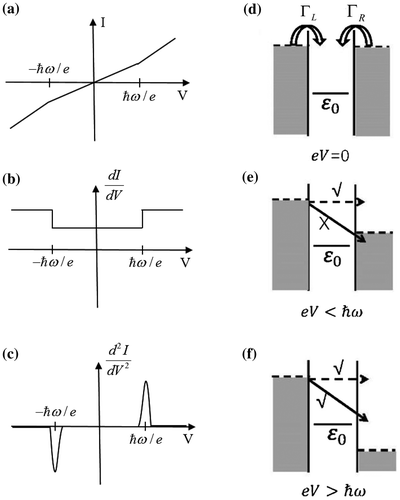S. You, J.T. Lü, J. Guo and Y.Jiang, Recent advances in inelastic electron tunneling spectroscopy. Adv. Phys.: X. 2 (2017) P. 907. https://doi.org/10.1080/23746149.2017.1372215
When the above article was first published online, an incorrect version of Figure was included. The correct version can be found below.
Figure 1. (a–c) Schematic spectra of I–V, dI/dV, and d2I/dV2, respectively, showing the inelastic electron tunneling features at the threshold bias voltage ħω/e. ω is angular frequency of the vibration. (d–f) Schematic diagram of the inelastic electron tunneling process. (d) The single level model and model parameters. ε0 represents the nearest molecular level participating the transport. Γ L and Γ R characterize the coupling of the molecular level with the left and right electrodes, respectively. (e) For eV<ħω, electrons do not have enough energy to emit a phonon. The inelastic process is blocked. (f) For eV > ħω, the inelastic process is allowed.

The reference numbering was also out of sequence following the removal of the original reference [27] during the production process.
Both of these errors have now been corrected in the online version.
Taylor and Francis apologizes for these errors.
